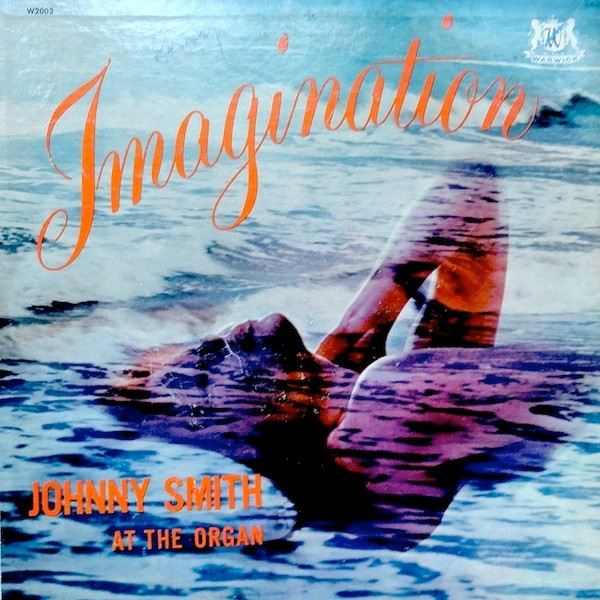-
Posts
9,841 -
Joined
-
Last visited
-
Donations
0.00 USD
Content Type
Profiles
Forums
Events
Blogs
Posts posted by mjzee
-
-
-

Reinhard Goebel Complete Archiv box, disc 33.
-

Kurt Masur - The Complete Warner Classics Edition, disc 47.
-
-
And this is from the obituary on the BN website:
Just before he passed, Alfred Lion, the founder of Blue Note, sent Cuscuna a steamer trunk holding all the photographs shot by Lion’s partner at the label, Frank Wolff.
https://www.bluenote.com/spotlight/michael-cuscuna-1948-2024/
-
OK, I found it. In the booklet to Blue Note's Nichols 3-CD complete set, Cuscuna wrote:
PRODUCER'S NOTE
During 1980 and '81, I systematically listened to every tape in the Blue Note vaults. Among my discoveries were 8 previously unissued compositions by Herbie Nichols, but no titles were provided for them. Circulating tapes among musicians brought only one title, "Riff Primitif," provided conclusively by Roswell Rudd. The search for the Blue Note recording files was still on and getting nowhere.
When Hitoshi Namekata asked me to put together a 3-LP set of unissued tracks from the Blue Note 1500 series, I used "Riff Primitif" and another original that had similarities to a Herbie Nichols composition, "Argumentive". So I called it "Argumentative Variations" (it turned out to be called "Trio").
Herbie's music is so startlingly original that making it available became something of an obsession. When there appeared to be no hope of finding Herbie's own titles for the new-found material, Charlie Lourie and I began researching a definitive set of Herbie's music. Roswell Rudd researched Nichols' life and edited the booklet for the eventual Mosaic collection, and I resigned myself to using "Untitled #1", et cetera, for the unissued material.
Alfred Lion, Blue Note's founder and the producer of these sessions, was as disappointed as I was about the absence of titles, explaining that Herbie put a great deal of thought and meaning into his titles. But as luck would have it, while searching through the Francis Wolff photographs of Blue Note sessions that were in his possession, Alfred accidentally came upon the long-lost Blue Note session logs.
Suddenly, we had titles. But more importantly, we had a road map to these five sessions of brilliant, complex music. With this priceless navigational chart through the session reels, it soon became evident that a wealth of worthy and different alternate takes existed. Added to the 2 tunes already issued and 6 more to come, we found 18 enlightening alternates.
-
6 minutes ago, Big Beat Steve said:
OT, and yet ...
The above statement is a bit ambiguous. Are the tune titles on the "brown bag" Herbie Nichols twofer alrerady those that Michael Cuscuna was able to reassign according to the session notes or are they non-definitive "provisional" titles?
Huh. I just looked at Discogs, and all titles have names. Why did I remember "Untitled Original"? Bad memory about this, I guess. Apologies.
-
Cuscuna himself told the story in the intro to (IIRC) the first book of Wolff's photos. He started Mosaic with Charlie Lourie, and put out the Monk box. One day, he got a long-distance call, and he recognized the voice from listening to BN session reels. Lion demanded to know who Cuscuna was and who gave him permission to release the Monk sessions. Cuscuna spent the phone call calming Lion down, and a friendship developed. Cuscuna would call Lion to see if he had any memories of particular sessions, and Lion would also call Cuscuna to chat. One day, a huge trunk arrived: Lion entrusted Cuscuna with Wolff's negatives. Even better, lurking in the trunk were session notes for many sessions that had no documentation. For example, when Herbie Nichols's "The Third World" brown bag was released, many tracks had no names. These notes contained the composition names, which is how they appeared in Blue Note's "The Complete Blue Note Recordings" package.
-

Disc 2: Schumann Symphony #4, Beethoven Symphony #4, Leonore Overture #3.
-
5 hours ago, Dan Gould said:
Not that I expect to learn anything extra but the NYT seems especially late on an obit.
The Times has now published an obituary (a pretty good one, too).
-

Reinhard Goebel Complete Archiv box, disc 32.
-
Cuscuna was all over the place. I just received from Dusty Groove a used copy of Blakey's Drum Suite (Columbia). Cuscuna produced the reissue, and there's a lengthy "Note On The Bonus Tracks" that is typical Cuscuna: covers everything important, readable and pithy, makes sense of a confusing bunch of tracks (Lil' T on this album was renamed to The Third on Byrd & Farmer's Two Trumpets on Prestige; The New Message was later renamed to Little T!), and never calls attention to the writer. He will be missed.
-

Kurt Masur - The Complete Warner Classics Edition, disc 46.
-

Disc 1: Kodály, Zádor, Enescu, Smetana, Sowerby, Dvořák, Brahms.
-
Release date May 17:

Tenor saxophonist David Murray, the giant of modern jazz, fuses all the great things that black music has produced: Gos- pel sounds, free jazz, Afro-Caribbean, blues, soul as well as the beautiful standards of classic jazz. Murray's colorful tone, unsurpassed intonation, sense of swing, melancholy tones, improvisational power and ingenuity make him one of the most important voices in music today. His new quartet, which mainly plays his own compositions, gives the three young musicians plenty of space. "Jazz legend David Murray is back with the next generation of geniuses", writes the Washington Post about the new quartet. And Derek Schilling writes in the liner notes to the fantastic album Francesca: "David Murray's compositional signature today lies in conjoning distinct styles whose encounter makes for the sound of surprise. The specific choice of these styles (and corresponding meters or textures) matters, for sure. More crucial still is the way Murray makes the transition from one to another seem natural, necessary even. If you can move with ease from funk to Latin rhythms, from waltz time to four-on-the-floor, from R&B to free and back again, it's because music knows no boundaries. When it's be- ing played right, it reaches beyond itself even as it affirms the continuity of tradition. The sound of surprise results when mu- sicians forge, in the moment, that unity-in-diversity. The real deal." A masterpiece!
-
26 minutes ago, sgcim said:
I was kind of puzzled by him, because as a kid, I first knew of him as a Rock DJ on WABC-FM. When he switched to jazz, I was a little confused; same with Jonathan Schwartz. Ed Beach and Max Cole were jazz to me; what were these rock DJs doing getting involved with jazz? As a young cadet in the Jazz Police, I was suspicious.
Then, his name was on all these incredible reissues I was buying. He was cleared of all charges. RIP.
He was all over the place. At that Mosaic open house, he pulled out a copy of "Buddy and the Juniors" on Blue Thumb: Buddy Guy, Junior Wells and Junior Mance. He told me the backstory of the album (see https://www.allmusic.com/album/buddy-and-the-juniors-mw0000276271); he seemed pretty proud of it. Over on the Hoffman boards, someone praised Cuscuna's production of Bonnie Raitt's "Give It Up."
-
-
Terrible, terrible news. When I went to that first Mosaic open house (5 years ago?), I noticed that Cuscuna smoked cigarettes; maybe that's how he got that radio voice. What a huge positive contribution to jazz music and life in general. RIP.
-
28 minutes ago, tranemonk said:
I forgot about this... Loved it.. Also love Laurie Pepper's Unreleased Art boxed sets... There was one that was 4cds...
Also great. Milcho Leviev was a monster.
-
-
Oh, gosh, there are so many. Off the top of my head: Lee Morgan - Live At The Lighthouse, Art Pepper at the Village Vanguard, Sonny Rollins and Don Cherry at the Village Gate (unofficial), and Stan Getz & Kenny Barron - People Time.
I'm in agreement with you about the Miles Blackhawk set. Hard to put the finger on the reason it doesn't click; probably some combination of a mismatch between Mobley and the rest of the band (who are following Miles), Mobley just not being that exciting, and Miles sounding rushed and bored.
-
Or download Chrome again, then log into your account. Seems easy.
-
RIP. The Fillmore album was simply great through and through. I was fortunate enough to see the original band in Central Park a few months before Duane's passing. At one point, I said to myself "Isn't that Donovan's There Is A Mountain"? Sure enough, when Eat A Peach came out, there it was as Mountain Jam.
-
:format(jpeg):mode_rgb():quality(90)/discogs-images/R-13322311-1552063195-1300.jpeg.jpg&f=1&nofb=1&ipt=044677aa5ba8cd982965435ea26a3cc6f9acd723716bf1c24853530f47e0f723&ipo=images)
Reinhard Goebel Complete Archiv box, disc 31.
_forumlogo.png.a607ef20a6e0c299ab2aa6443aa1f32e.png)




What Classical Music Are You Listening To?
in Classical Discussion
Posted
Disc 3: Schoenberg, Honegger, Kreisler, Schumann